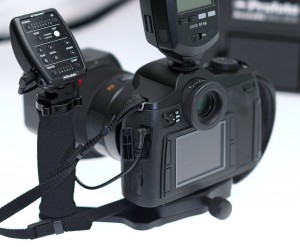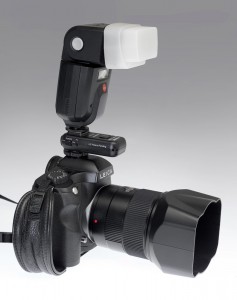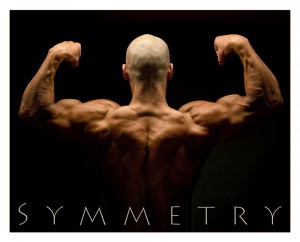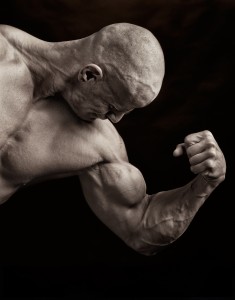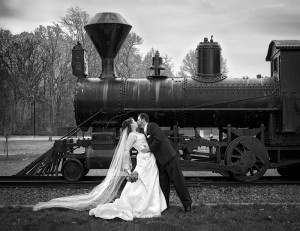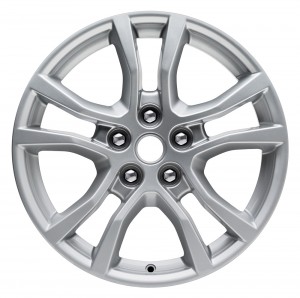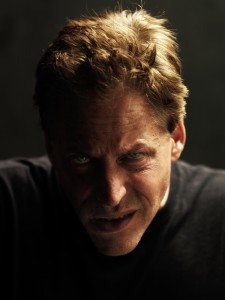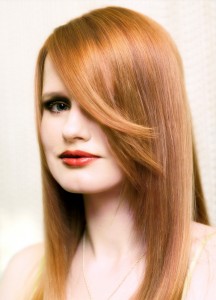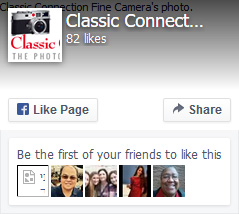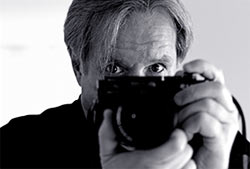 Previous entry regarding the influence of technology on modern photographic art spurred on a fair amount of discussion when linked to one of my favorite forum sites … GetDpi. Many thanks to those who participated.
Previous entry regarding the influence of technology on modern photographic art spurred on a fair amount of discussion when linked to one of my favorite forum sites … GetDpi. Many thanks to those who participated.
Now I’d like to switch gears and talk a bit about supplemental photographic lighting, not just the science and technology of it, but the role it can play in the Art of Photography … maybe an even bigger creative role in your photography.
Since The Classic Connection is a Leica centric reseller, I’m going to confine the remarks and examples mostly, but not exclusively, to Leica products, however the notions touched on are universal to just about any camera. I say Leica specific, because Leica users tend to be available light photographers. As a longtime member of the Leica community, I’ve found that many think the use of supplemental lighting an abhorrent concept. Perhaps it is just the fear of the unknown, and/or the mass amount of flat direct head-on flash photography or over-flashed work floating around … compounded by the fact that Leica is synonymous with rangefinder photography that traditionally has be available light territory.
Yet, light knows no brand, or cares what photographic tool is in your hand. Light is light. Be it natural, or man made. What determines the difference is quality, quantity and direction. Also consider how “Let There Be Light” can extend the use of the tool you already have … and in many cases increase the performance. For example, current premiere Leica products are CCD sensor cameras and not exactly known for ultra high ISO captures … we do not have ISO 12,500 to see in the dark with. This is especially true for the Leica S2. Like most medium format CCD sensor cameras it is best at base ISO, and while we can shoot up to ISO 1250, it isn’t the optimal use of such a splendid camera. As I mentioned to a S2 photographer that I am tutoring in lighting techniques, “Why spend that kind of money on a killer camera, and then ignore one of the most important accessories you can get for it … lighting?”
What kind of lighting is best?
Most people want as natural looking lighting as possible … as close to ambient as can be created. This is a worthy objective, but in many ways it is also a limiting one. Most people think of natural light in a narrow manner … yet if you think about it, ambient can also be artificial in source, and often is. The difference with using lighting tools is that you control where is comes from, its level of intensity, and how it strikes the subject. In short, you don’t have to live with a certain quality or quantity of found light, you can create it. Any time. Anywhere. This fact changes everything.
Speed-lights or Strobes?
The very popular Strobists movement as given rise to use of speed-lights for off-camera lighting. Both Nikon and Canon have really facilitated this with sophisticated TTL lighting systems and heavy promotion with some well known photographers … further advanced by Canon’s latest speed-light offering that is now radio controlled as opposed to the less reliable infrared, line-of-site triggering. IMO, this caters to both a bit of creative laziness, and perhaps that latent fear of not understanding lighting, and a resulting reliance on automated TTL solutions … which can actually get in the way when designing light.
Speed-lights DO have their use. They are great at filling inky shadows and eliminating “raccoon eyes” when shooting in harsher over-head ambient. Anywhere that a puff of fill is needed, or when dealing with mildly back-lit situations where a properly exposed subject results in a blown-out background. What is important to remember is that ideally we would like to shoot at as low an ISO as possible, especially with a camera like the S2. Many Canon and Nikon “Strobists” use a higher ISO so their speed-lights don’t have to work as hard. ISO 800, 1600, or even 3200 is not uncommon in lower light, where a S2 doesn’t even go that high. IMO, high ISO cameras are one of the contributing factors to more use of speed-lights in place of strobes.
In fact, speed-lights are incapable of working that hard. The typical top-end speed-lights like the Leica SF58, Canon 580EX-II, Nikon SB900 top out at about 70 to 80 w/s at full power … where a typical strobe is 500 or 600 w/s … and many go much higher. Not to mention that continuous shooting with speed-lights at full out-put is beating the snot out of an expensive tool. In essence, using a speed-light in many situations is like bringing a Smurf bat to a gun fight. Then there is cost. To equal the total output of a typical 500 w/s strobe you would need six SF58s at a cost of about $3,900!
Plus, most modern speed-lights have a thermal shut down feature designed to avoid frying the flash if too many full power pops are used. Every single time I’ve used speed-lights for more demanding lighting situations, the key off-camera speed-light has shut down to protect itself, and it takes at least 15 minutes to recover. In contrast, a typical 500 w/s strobe can fire all day long … and if set to ½ power or less (250w/s), will recycle almost immediately compared to a turtle slow recycle of a speed-light set to full power (70-80w/s).
How more lighting power can extend the use of your Leica gear.
Why the need for more lighting power? There are two basic situations where going beyond the ability of a speed-light is beneficial to the S2 shooter (and the M8/9 shooter).
In very bright ambient conditions you can expose for the background and add directional lighting on the subject to bring it back into balance rather than being silhouetted. Contrary to what seems logical, a speed-light is far to wimpy to achieve this in many situations. Add any kind of modifier to improve the quality of the light and you cut the amount of light reaching the subject. The further away the light, the less of it reaches the subject. Add the two together and it becomes apparent why more lighting power is desirable, even critical. The other aspect of using supplemental lighting outdoors is to mitigate the effect of surrounding color casts. If you shoot in a wooded area there is a good chance that the surrounding greenery will add a ghastly green pallor to the skin tones, especially in the shadows.
The second use of powerful strobes is when it is dead-dark out, or the ambient is just not high enough to make a proper exposure … or situations where you want to kill the effect of the ambient altogether even if it is bright enough to make a proper exposure. Interior work is often fraught with multiple light sources of varying color temperatures … especially with the advent of energy-saving bulbs which play havoc with skin tones. This is very true for the S2 which is somewhat sensitive to the red spectrum and can result in nuclear skin in mixed ambient lighting.
What type of strobe equipment is right for the Leica shooter?
To start with, a Leica SF58 is essential. Not only does it provide that little touch of fill when used alone, it is a great side-kick for the more powerful directional strobes when the Leica speed-light is used as on-camera fill.
What about those strobes? My first piece of advice is to not skimp. If you shelled out upwards of $30,000 to $40,000 for a camera system as good as the S2, why add bargain basement lighting? Some argue that light is light, which is initially true … however, when using a sophisticated S2 system with exemplary optics, it’s the little things that add up to a decisive difference in the quantity and quality of controllable light at your disposal.
One of the most important features of any lighting system is the modifier mount system … some popular inexpensive strobe systems have a deplorable mount that can’t hold a larger soft-box securely. They are fine with umbrellas and small modifiers, which is VERY limiting. Brands like Profoto have a very secure mount system that also adds a level of control in focusing the light by sliding it back or forward on the body of the strobe itself … there are even measure indicators so you can repeat an effect when desired.
The first choice you have to make is how portable does the lighting system need to be? Fortunately there are numerous battery driven choices on the market today … and Lithium battery technology has gone a long way in making them more portable than ever before. I use a number of battery driven solutions, and select which based on what conditions I may be facing. These range in power output from 400w/s to 1200w/s portable units. I also have studio Mono lights powered by small but powerful Lithium batteries that extend coverage to larger applications where multiple lights may be needed.
To get the light off-camera, these battery solutions do wonders. I would add that the application of such systems can range from a simple one-man operation with a single off-camera key directional light, and the SF58 in the camera’s hot shoe. The off-camera light can be triggered by a radio transmitter that is connected to the S2 via a sync cord to the sync output jack on the side of the S2. I use a Kirk Grip when using strobes… which does double duty … it holds the radio sender and helps steady the camera while shooting.
Here is a simple mobile light configuration showing how the S2 is set up on a Kirk grip that holds a Profoto AIR sender using a sync cord to to the S2’s PC outlet on the side of the camera … a 2.3’ Profoto Octa-box with a slight golden tone for people shooting mounted to a 9’ mobile boom arm (using an assistant), or simple sand-bagged light-stand if working alone … and the portable Profoto Acute B600 Lithium battery generator that the strobe head plugs into (which can also be hung on the light-stand to stabilize it)
Click on any thumbnail for a larger view:
If you want a simpler set-up for on-camera SF58 not using a separate bracket grip and sync cord to the camera , and still have a radio triggered studio strobe of any kind, you can use a hot-shoe type radio with a built-in hot-shoe of its own that fires the SF58 while also sending a sync signal to an off-camera light triggered by a receiver … like the one shown in image B, which is a Phottix Stratos-II for Nikon. The SF58 has to be set to A Mode rather than ETTL … however, it will fire a SF58 set to TTL but it is always at full power.
Then of course there are the AC studio pack/head systems which are usually even more powerful ranging in output levels from 1200w/s to 4800w/s+. These are used to place a lot of light on a subject, lights that may be heavily modified while using smaller apertures … like product work that needs a lot of DOF to get everything in focus, etc. Some really “top dog” packs are incredible performers able to shoot at 10FPS and do it all day long. (I used a Profoto D4 2400w/s box and a D1 Monolight with a 10º grid to shoot the above images of the S2 set-up).
Some of the best in the lighting business are Broncolor and Profoto, and for battery use the new Hensel Porty 1200L is one of the best out there … Hensel has included a Profoto AIR radio receiver to allow mixing and matching with Profoto AIR units like the small portable Acute 600Bs AIR Lithium battery unit, or D1 AIR Mono-Lights. I also use some Elinchrom gear, like the tiny 400w/s Quadra battery pack system. The Elinchrom Quadra offers full control of power levels at the camera position, makes a wide variety of excellent light modifiers, and the bonus is that most EL modifiers be used on any Profoto head via an adapter. Elinchrom has produced a whole line of Rotalux modifiers that set up and collapsible easily … like the popular 39” Rotalux Deep Octa.
If you want a simple studio set-up, the D1 mono-lights with AIR radio allows full control of levels from the camera position, which is important when the mono-light is 12’ up and/or buried in softbox. This is a decent compromise if most work you will be doing is near an AC outlet. However, they can be powered by a separate battery like the large Profoto BatPac, or much smaller Paul C Buff Vagabond Mini Lithium. Be aware that self-contained mono-lights are larger than pack heads and with a light modifier added are harder to use on a mobile boom arm wielded by an assistant that has to carry it all. That can be a lot of weight out at the end of a 9’ boom arm or “painter’s pole”.
Creative use of Lighting with your Leica camera.
Again, this blog post isn’t aimed at those highly familiar with lighting, it is urging Leica owners to consider expanding their creative horizons by include lighting in their tool box. It vastly increases the value of the S2 in particular (as well as the M digital cameras). The S2 specifically simply LOVES a lot of light … same as any Medium Format type CCD sensor camera. My Hasselblad H4D/60 loves light just as much or more.
I urge those interested in exploring the possibilities to look beyond the typical speed-light with umbrella. Umbrellas are a fine way to easily get lights off-camera, but are quite difficult when it comes to controlling where the light goes and doesn’t go. Light modifiers such as Softboxes, Octaboxes, Beauty Dishes, Strip lights, Grids and Snoots, etc., offer much more control … and control is the name of the game when it comes to lighting.
For example, this shoot for Fitness posters, done for a Personal Trainer, used a simple lighting set-up to achieve dramatic results when using the S2. This is more about controlling the light than anything else. The back shot was a 6 ‘X 1’ Profoto strip light with a 4” mask to narrow the light even more. It was boomed directly over the subject’s head to directionally cross light his muscles and use shadow to make them show up better. The narrow spread of light also kept the light from spilling onto the background.
The second, more profile bodybuilder S2 shot, was done with a single 33” highly polished, “specular light” Mola Beamm beauty dish and a bounce card positioned for slight fill. The subject was in motion as he went into peak position with his muscles popping only for a brief moment … but the very short flash duration of strobes are what determine the freeze frame effect, not shutter speed. Timing is everything.
Here is a similar configuration for a pregnancy shoot with the S2. I had always wanted to use a Le Corbusier chair for one of these shots because of the corresponding graphic rounded shapes … it was also lit with 6’ strip-light above, but in this case I used a second 6’ strip light lying on the ground in front of me to light up the chrome frame.
This is a practical application of off-camera lighting done at a wedding using the mobile set-up shown above. The dominate ambient was dead flat and directionally behind the subject, so a bit of flash separated the subjects from the background, and made it all snapper looking.
I don’t use the S2 for much “Bread & Butter” production product photography, but it works when needed …. here is one of many “Wheel” shots we do each year for catalog applications, done with the S2. The lighting here has to show the shape of the aluminum wheel and keep the tonal range with-in printing abilities.
Finally, some other Lighting examples to demonstrate some things that can be accomplished with simple lighting ideas and set-ups:
This one was using a large ring-light often used for fashion work:
This “Angry Man” image used highly directional light and a small gridded snoot to slightly light the eye in shadow.
Finally a shot done for a hair designer to enter into a stylist contest. Just a broad soft light source was used.
Give some consideration to expanding your tool-box to include lighting gear. Your S2 will love you for it!
Marc Williams
FOTOGRAFZ. LLC
www.fotografz.com










